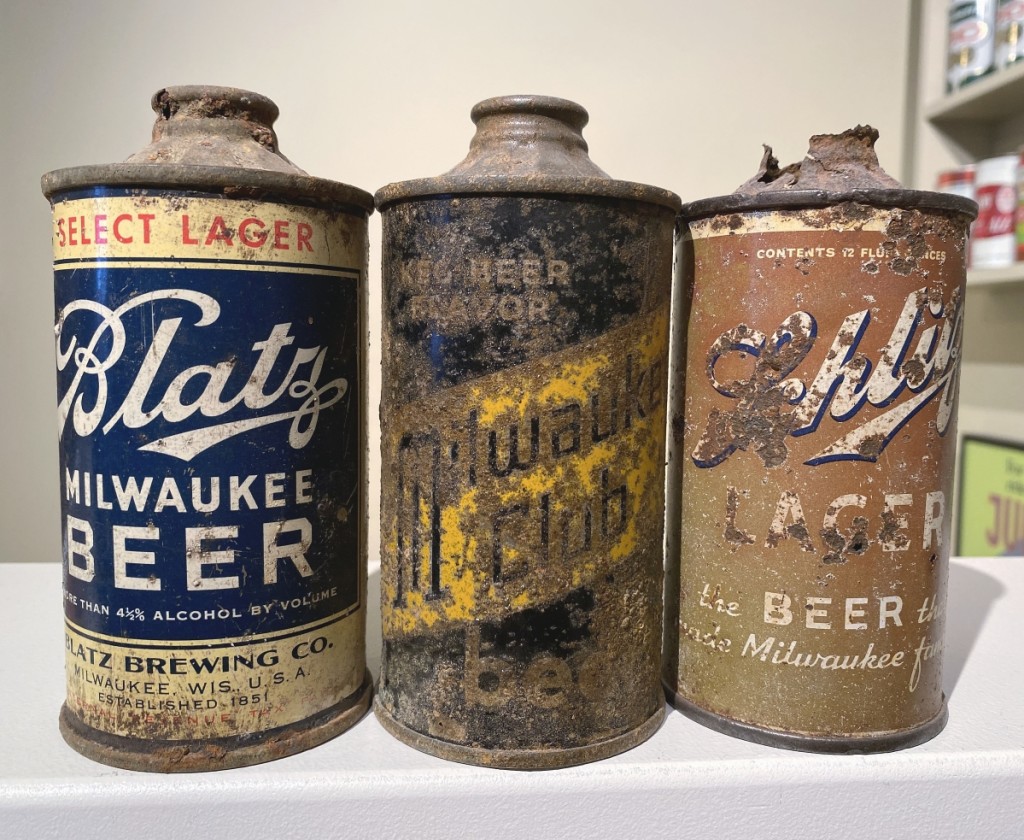David Maxwell, PhD, is an archaeologist and lecturer at Simon Fraser University in Burnaby, British Columbia, Canada, whose primary field is faunal analysis, particularly vertebrates. He has identified, analyzed and interpreted tens of thousands of bones from sites throughout western North America in California, British Columbia, Arizona and New Mexico. It’s not on his CV, but he is also an archaeological scholar of beer cans. His collection before a recent downsizing numbered some 4,500 artifacts. We sat down with him to better understand his heady adjunct pastime and what roadside trash can tell us about modern culture.
Beer cans. Rubbish or relics? Trash or time capsules?
The vast majority of the “relics” that we encounter in any archaeological site are rubbish from the past, and beer cans are no exception. Like any variety of artifact, beer cans can provide a glimpse into past human behaviors; for example, we can trace the changes in consumer trends if a large trash dump is encountered, making it possible to learn of the local populations’ preferences for certain brands of beer, type of package and how these might change over time. Beer cans are a particularly useful item for historical archaeology, given that their design is quite time sensitive – making them relatively easy to date to a very specific time frame – and in most cases these items were only used for the short-term – for beverage consumption, allowing us to link the majority of past activities to specific moments in the past.
What prompted you to begin collecting them?
I am one of those people who accumulates things, often unintentionally. As a young child, I began collecting bottle caps – all varieties, not just beer – soon discovering that a friend down the street did the same. When we were about 11 years old, we decided to collect beer labels; quickly discovering that there was no easy way to remove these from the bottle, we decided to just keep the whole bottle. My family had a cottage in northern Washington State, and I reasoned that I may as well collect beer cans as well as bottles, as cans were quite common in Washington, and very uncommon in British Columbia.
No bottles in your collection?
Like every person I have ever talked to who collects brewery items, I began by collecting everything – cans, bottles, caps and anything else I could get my hands on. After a year or so, I had amassed a collection of about 100 beer bottles and about the same number of cans; at that point my parents intervened, telling me I had to choose one or the other; I picked cans, as by this point I had begun finding older cans at the side of the highway in Washington State. I still have a small collection of bottles, either specimens that held some meaning for me or that I happened to like. These are displayed in the window of my office at SFU; I do not actively try to add to my bottle collection, and doing so would only happen by chance.
What’s the oldest can in your collection?
It is hard to pin down an exact age on most cans, particularly if they are in less than perfect condition as the extremely fine print is often what will distinguish particular production dates. Canned beer – in flat topped cans requiring a “church key” opener – were first commercially available in North America in January 1935. Cone-top cans, shaped like metal bottles, first appear in July 1935; the earliest cones had flat bottoms and inverted ribs on the cone or spout, with this variety being produced until late 1936; I have three examples of these cones that I can securely date to the first 18 months of production. I am not sure whether I have any flat top cans that I can firmly date to 1935, but certainly have specimens from 1936 to 1937.
How are they displayed in your home? Your office at Simon Fraser U?
I have several display shelves throughout our house, so there are cans all over. The majority of those on display are in the staircase leading to my home office, and there are additional cans within the office itself. There are probably 350-400 cans on display in our home, mostly arranged by country – I only collect cans from Canada and the United States – brand name and age. The remainder of my collection is in storage. The materials on display in my office at work consist primarily of items I enjoy but had no room for at home, including several beer signs – most lighted – beer trays, bottles and a handful of cans. Some are mingled among my books, but the trays and signs are primarily found on the wooden beams above the bookcases.
Nowadays, the outside of a beer can seems to be a canvas for trendy art. That was not the case in the late 1930s, no?
I am a fan of the artwork on many of the craft beer cans produced today, although I do not collect these; modern technology allows for the use of sticker labels and shrink wrap plastic labels, both offering a lot of artwork options. Many of the early cans were indeed quite limited in their graphics, although this is not true of all of them. Label designs grew bolder after World War II, and by the mid-1950s pastels started to show up on many cans, along with cartoon-style designs, sets of cans and so forth.
You recently downsized your collection. Why?
I downsized in part because my wife and I moved into a townhouse, with less room for displaying cans, but also because I had begun to lose interest in keeping up with current cans, and having to move thousands of cans every time I added a new label or variation. I should point out that even when I had 4,500 cans in my collection, this is a very small number compared to many collectors. A few years ago I met a collector who had been featured on a TV show about extreme collections and who had, at the time, 88,000 different cans; I’m sure he has well over 100,000 variations by now. I decided to keep only the cans that I really liked, and to only try to add other cans that I felt were interesting. I typically only add six to eight cans to my collection in any given year.
Can a beer can be considered historic and therefore eligible for protection under the National Historic Preservation Act?
Currently no. The National Historic Preservation Act makes materials eligible for protection once they are 100 years of age, so beer cans have another 14 years to go before they will become eligible for NHPA. Some state laws, such as the California Environmental Quality Act, mandate that materials greater than 50 years of age must be recorded, and this means that even some aluminum cans now need to be recorded by archaeologists. This, in turn, puts a greater importance on being able to determine the age of cans.
Were there any Mayan beer vessels?
The Maya produced special ceramic vessels for drinking chocolate, frequently decorated with glyphs that translate roughly as “his chocolate pot.” I am unaware of any similar vessels for fermented beverages like pulque – a fermented agave beverage the much later Aztec culture produced for ritual purposes – or chicha, the fermented corn beverage still available in places in Mexico and points south.
Littering is not as socially acceptable in the Twenty-First Century. But you know what I see a lot of as I walk along a roadway? – hundreds of little plastic “nip” bottles of vodka and other booze. New collecting category?
If it exists, someone collects it! My older brother used to collect miniature liquor bottles, and I am sure some people do now, although my first thought is that the older glass bottles were probably more collectible.
Do you make home brew?
No. There are far too many wonderful craft breweries around for me to bother doing this; we have two within an easy walk from our house, and a third opening soon!
What’s your latest research focus on?
As “teaching faculty,” the vast majority of my time is spent developing new undergraduate courses, leaving little time for active research. I have been involved as a committee member with one of our graduate students who has been researching archaeological evidence for ritual finger amputation, and has discovered evidence for this not just among the Classic Maya – where the research started – but potentially into the Upper Paleolithic, with evidence of missing digits in some of the hand prints known from cave art in France and Spain, western North America, particularly California, British Columbia, Arizona and New Mexico.
– W.A. Demers






